On April 21, 2025, Easter Monday, Pope Francis — born Jorge Mario Bergoglio to a working-class Italo-Argentine family — died at age 88, felled by a stroke after battling pneumonia. The date, coinciding with the traditional anniversary of Rome’s founding, carries a poignant symbolism: The eternal city, cradle of the Roman Empire, mourns a pontiff whose reign, for many, eroded white Christian heritage by flinging open Europe’s doors to third-world immigration.
From France, where the spires of Notre-Dame still defy a sea of minarets, I write not to grieve but to question. Bergoglio’s death is not a mere farewell; it is a searing challenge for the white West, confronting the universalism that unleashed migration chaos upon us. The conclave to choose a new pope is scheduled for May 6 through 11. Could it rekindle a flame for our heritage, or will it leave us with nothing but ashes?
The Pope as sovereign
The papacy is more than a spiritual office; it is a geopolitical force, Europe’s last absolute monarchy, wielding influence over 1.4 billion Catholics. The pope shapes doctrine, appoints bishops, and sets the moral tone for nations. Politically, he is no longer the power John Paul II was, rallying Poles against Soviet communism, but his weight is far from negligible in Catholic-majority nations. Papal encyclicals — letters to the world — still sway minds on issues from abortion to climate. When a pope like Bergoglio champions acceptance of migrants, he doesn’t merely preach; he redraws the West’s demographic destiny.
In France, where secularism reigns, Catholic roots still stir political reflexes, such as some lawmakers’ opposition to migratory policies — even while leftists such as Marine Tondelier, a Green Party leader who is anti-white and pro-immigration, hide their Catholicism to avoid stigma from supporters.
Bergoglio’s legacy: A thorn in the white heart
Bergoglio was a paradox: a man of humility who alienated millions of white Catholics with his relentless universalism. He washed the feet of Muslim migrants in 2016 and urged parishes to house Africans in 2023. In 2019, he declared that the “diversity of religions” was “willed by God,” a statement that jarred traditionalists who view Christianity as Europe’s bulwark against Islam. In 2023, he called borders an “obstacle to humanity,” outraging French villagers in hamlets transformed by non-whites.
Philippe de Villiers, a prominent French anti-immigration sovereigntist, criticized Bergoglio. In an interview on April 21, 2025, he accused him of “looking down on France.” When the Pope was in Strasbourg in 2014, he said “I am in Strasbourg, not in France,” and likewise in 2023 in Marseille, he said, “I am in Marseille, not in France,” thus celebrating urban multiculturalism. De Villiers sees this as “contempt” for white, Christian France. In 2014, at the European Parliament, Bergoglio called Europe a “grandmother, no longer fertile,” an image Mr. de Villiers sees as welcoming fertile Muslims to a continent of “barren old maids.”
Bergoglio rarely spoke of Muslim persecution of Christians, and instead favored dialogue with Islam. In France, where churches burn and some priests live under constant threat, his silence felt like abandonment. In his infamous 2020 encyclical Fratelli Tutti, he preached a borderless fraternity, oblivious to the cultural clash tearing Europe apart.
Sometimes labeled in France as a far-left pope — even “anti-white” by Éric Zemmour — Bergoglio spared no criticism of capitalism. “This economy kills. It excludes. It destroys Mother Earth,” he declared in 2015, saying it widens inequalities and ravages the environment. His critiques of communism were far milder. In 2013, he called Marxism “wrong,” but in 2022, he said, “If I see the Gospel only sociologically, yes, I am a communist, and so is Jesus.” His dialogues with communist leaders such as Cuba’s Raúl Castro in 2015, and his support for DIALOP — a project blending Christianity and Marxism — contrast with his anti-capitalist vehemence. This leniency toward an atheistic ideology responsible for millions of deaths seems a betrayal of the white Christian heritage.
The rise of sedevacantism
Bergoglio’s reign fueled sedevacantism, a traditionalist movement claiming the papal throne has been vacant since Vatican II (1962–1965). Sedevacantists, now numbering from tens to hundreds of thousands worldwide, reject all popes since John XXIII, and consider their ecumenism, religious liberty, and support for immigration to be heretical. Under Paul VI, who implemented Vatican II, sedevacantism emerged in reaction to liturgical reforms. John Paul II’s interfaith meetings, as in Assisi in 1986, and Benedict XVI’s moderate traditionalism failed to quell this current. Bergoglio poured fuel on the fire.
In France, sedevacantist chapels such as the Society of Saint Pius V draw crowds weary of modernism. Globally, the Most Holy Family Monastery (United States) and the Istituto Mater Boni Consilii (Italy) report growing interest. Bergoglio’s views on migration amplified this revolt. Likewise, his 2016 encyclical Amoris Laetitia, loosening communion rules for the divorced, and his 2023 approval of blessings for same-sex couples were unacceptable. For sedevacantists, the Vatican is no longer Catholic. Mr. De Villiers lamented persecution of “traditional Christians,” those of “the church of our childhood,” like the small parishes of Brittany or Boulogne, hounded for their fidelity to ancient liturgy. On the other hand, sedevacantism risks alienating moderates, a challenge for those seeking broader influence.
What lies ahead at the conclave?
A conclave is the Church’s ancient ritual for electing a pope, held 15 to 20 days after a pontiff’s death — in this case, between May 6 and 11. Up to 138 cardinal electors, all under 80 the day the last pope died, gather in the Sistine Chapel, locked away (“cum clave,” with key) to vote in secret. Ballots are cast twice daily, burned after each round: black smoke signals failure to agree, white smoke heralds a new pope. A two-thirds majority is required, and the chosen cardinal is asked, “Accepto?” (Do you accept?) and what name he will take. This blend of prayer, politics, and intrigue pits factions against each other.
In 1268, after Clement IV’s death, the conclave in Viterbo, Italy, dragged on for three years of quarreling. Impatient locals locked the cardinals in (giving birth to the term “conclave”) and put them on bread and water to hurry a decision. It is reported citizens even tore off the roof of the building to pressure the cardinals.
This year, with 110 of the 138 electors appointed by Bergoglio, the conclave is the largest in history, and its diversity — only 40 Europeans — makes the outcome uncertain. The conclave pits modernists — heirs to Bergoglio’s inclusive globalism — against conservatives, yearning for doctrinal rigor.
Here are the main candidates:
- Modernists:
- Pietro Parolin (Italy, 70): Vatican Secretary of State, a seasoned diplomat who negotiated with China. A continuity candidate, he champions interfaith dialogue and immigration. He struck a deal on Chinese bishops in 2018, which makes him a favorite of liberals, but rankles conservatives. It was an attempt to unite the underground church, still loyal to Rome, with the Chinese-communist-approved church, whose bishops were historically appointed by the government.
-
- Luis Antonio Tagle (Philippines, 67): Nicknamed the “Asian Francis,” charismatic and liberal on social issues (LGBTQ, divorcees), he appeals to the Global South but alarms traditionalists.
-
- Matteo Zuppi (Italy, 69): Archbishop of Bologna, a Bergoglio ally, he promotes social justice and welcomes migration. His role as a Ukraine peace envoy bolsters his profile.
- Conservatives:
- Robert Sarah (Guinea, 79): A staunch traditionalist, he denounces wokism, same-sex blessings, and unchecked immigration. His book The Power of Silence draws sedevacantists and conservatives, but his age and African origins limit his chances. He has unexpected supporters, such as the Russian thinker Alexander Dugin, who wrote on X: “There are two excellent points in Robert Sarah: He is traditional (he believes in God). He is black (his faith is authentic because blacks are less fraudulent than whites).” This reduces Sarah to a racial stereotype, insulting both whites and the depth of his faith. Dugin, in his essentialist zeal, betrays the spirit of a conclave that should rise above such clichés. Who will see Sarah for his fight, not his skin?
-
- Péter Erdő (Hungary, 72): A canon law expert, close to Viktor Orbán, he opposes same-sex blessings and communion for the divorced. In 2015, he likened refugee aid to “human trafficking.”
-
- Wim Eijk (Netherlands, 71): An ultra-conservative, he called Bergoglio’s intercommunion ideas “apostasy.” Less globally influential, he remains a traditionalist hero.
White pope, black pope: stakes and identity
The conclave’s outcome — white pope or black — will shape the symbolic place of white identity. A black pope such as the Guinean Sarah or Fridolin Ambongo Besungu from the Congo might be conservative, rejecting wokism and even immigration. Yet he would symbolize the Global South’s rise, potentially alienating white Catholics who see the papacy as Europe’s heritage. Of course, a white modernist would extend Bergoglio’s universalism, prioritizing migrants over native Europeans, eroding white cohesion.
Given the zeitgeist of our times, a white conservative, such as Péter Erdő of Hungary, rooting the Church in its European cradle, would be a surprise best choice. Mathematically, a conservative bloc (Europe: 40 votes; Africa: 32 votes) unites 72 of 138 electors, close to the 92 needed for a two-thirds majority. If Erdő unites European traditionalists and African conservatives, he could prevail, especially if progressives split. But Bergoglio’s 110 appointees favor a modernist, with Pietro Parolin leading. Vatican insiders give him a 40 percent chance. They give Cardinal Erdő a 15-20 percent chance, but he remains an outsider, as was John Paul II in 1978.
A flame or a flicker?
A pope’s death always marks a new era for Catholics, each pontiff seeking to leave a distinct mark on his time. Will the 2025 conclave produce a white flame, like Erdő, to rekindle Europe? A pope is a paradoxical head of state, theoretically free to speak truth without fear of reelection. By 2030, whites could be minorities in many key European cities. A pope who ignores this betrays Clovis and Joan of Arc. From France, a land of martyrs, I dream of a Church that distinguishes peoples and lifts the moral taboo on that differentiation.
It remains vital for white Catholics to keep building networks that speak within the Church the truths popes have yet to voice. No truth is a sin, not even racial truth, but even within the Church, racial clarity has foes, fighting to impose their views. Let us do more to impose ours. The conclave offers a slim chance to make the Vatican a fortress for the West. The outcome lies in the smoke above the Sistine.
Citations and sources
Pro-immigration statements:
- “We must say it clearly: there are those who systematically and by every means push back migrants, and this, when done knowingly and deliberately, is a grave sin.” (General Audience, August 28, 2024, Vatican News)
- “We must not be disconcerted by their numbers, but view them as persons, seeing their faces, listening to their stories, trying to respond as best we can to their situation.” (Address to the U.S. Congress, September 24, 2015)
- “Migrants and refugees are not pawns on the chessboard of humanity.” (Message for World Migrant and Refugee Day, May 24, 2013)
- “The legitimate regulation of immigration must never compromise the essential dignity of the person.” (Letter to U.S. Bishops, February 10, 2025)
- “The stranger residing among you must be treated as your native-born, and you shall love them as yourself.” (Message for the 104th World Migrant and Refugee Day, August 15, 2017)
Anti-capitalism statements:
- “This economy kills. It excludes. It destroys Mother Earth.” (Address to Popular Movements, Santa Cruz, Bolivia, July 9, 2015)
- “The market alone does not solve everything, though they would have us believe this dogma of neoliberal faith.” (Fratelli Tutti, §168, 2020)
On Communism:
- “The Marxist ideology is wrong. But I have met many Marxists who are good people, so I don’t feel offended.” (Interview with La Stampa, December 15, 2013)
- “If I see the Gospel only from a sociological perspective, yes, I am a communist, and so is Jesus.” (Interview with America Magazine, November 28, 2022)

 RSS
RSS

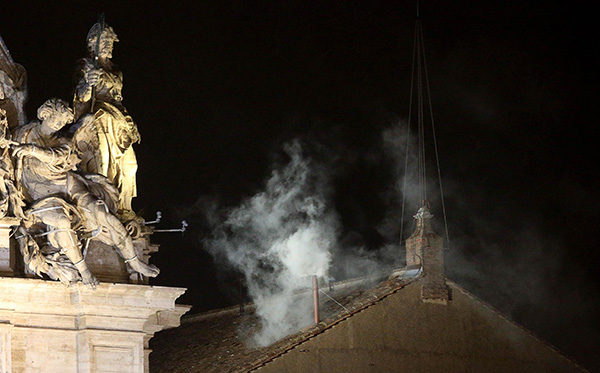
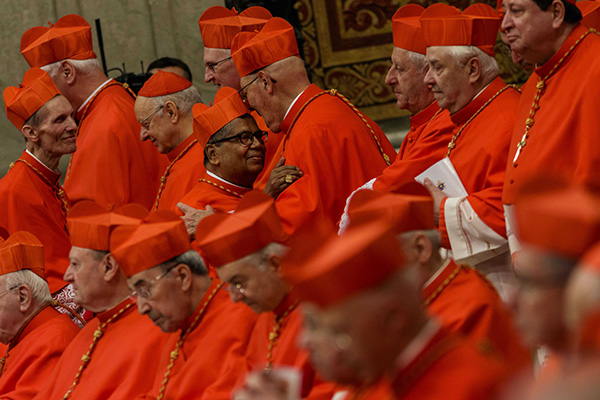
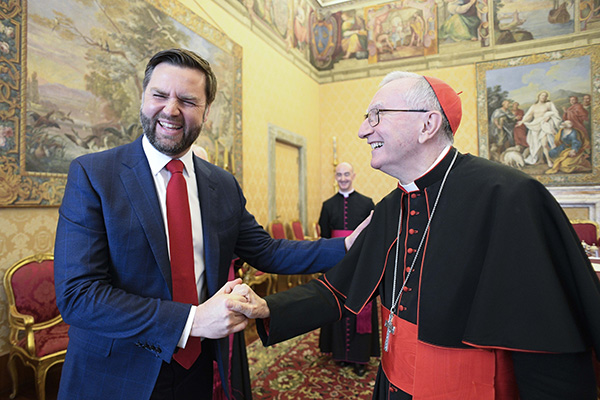
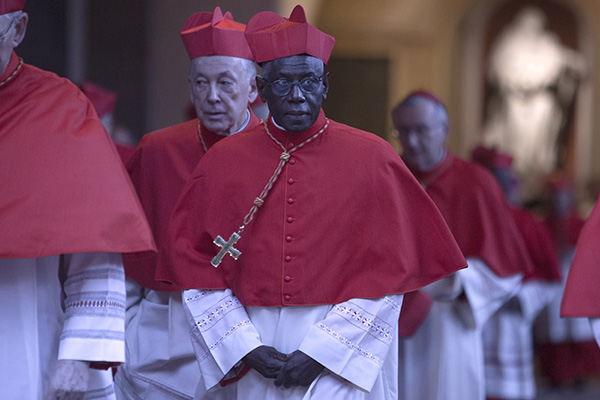
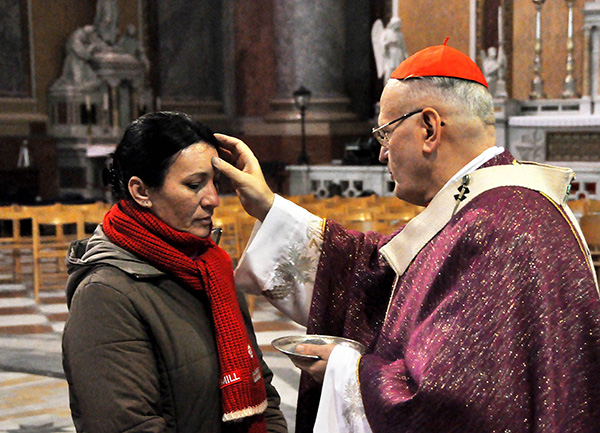





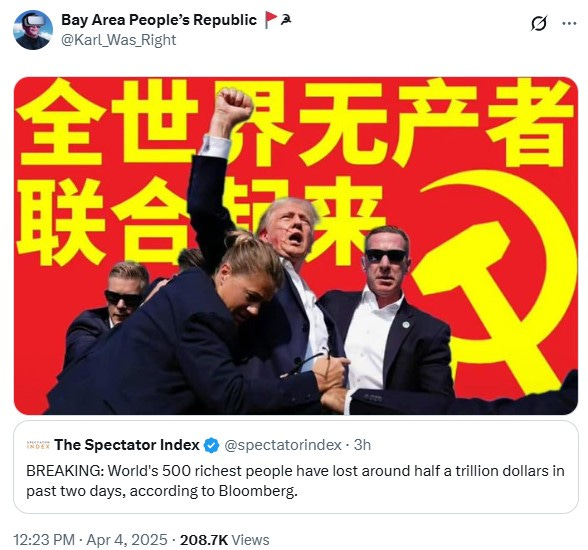



“The eternal city, cradle of the Roman Empire, mourns a pontiff…”
Started laughing right there. Stopped reading right there.
Kudos to author on mentioning the topic of sedevacantism. Bergoglio stacked the decks. Anything other than a NWO puppet would be a miracle. That being said, to be a pope one must be baptised, male and of course catholic. Bergoglio was not a catholic. Unless the pope elect nullifies the revolution, gets consecrated in traditional rite of episcopacy, excommunicates the flaming sodomites and enemies of God, restores the Mass of all ages and consecrates Russia to Immaculate Heart of Mary, we are in for Bergoglio 2.0 and continuation of the revolution that will ultimately crown the son of perdition.
it’s been 1167 years since we had a transgendered pope, it might just be time to broaden the appeal of the church and elect another. pope joan ll could be just the answer, to the problem of falling attendance and free up some of that lgbtq money, to rebuild church coffers. you know what they say, when in rome….
Might as well get Usha Vance to pick the next pope, just look at her face while in church for Easter services:
https://www.breitbart.com/politics/2025/04/18/jd-vance-attends-good-friday-service-at-vatican-with-his-family/
She could give 2 shits about any Western religion, but white women love her.